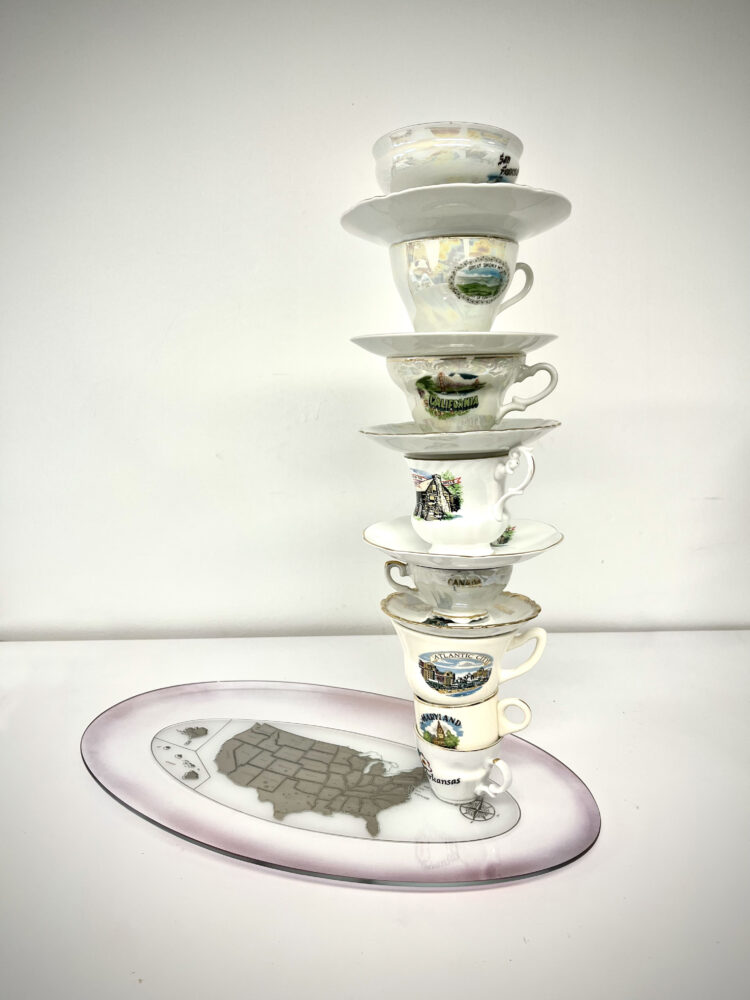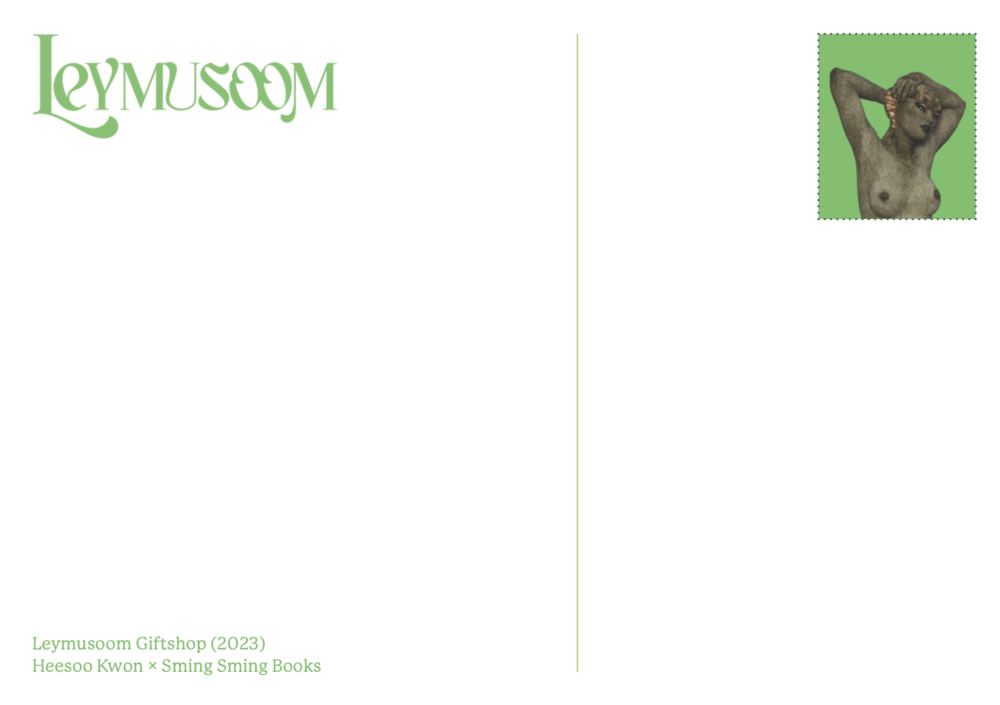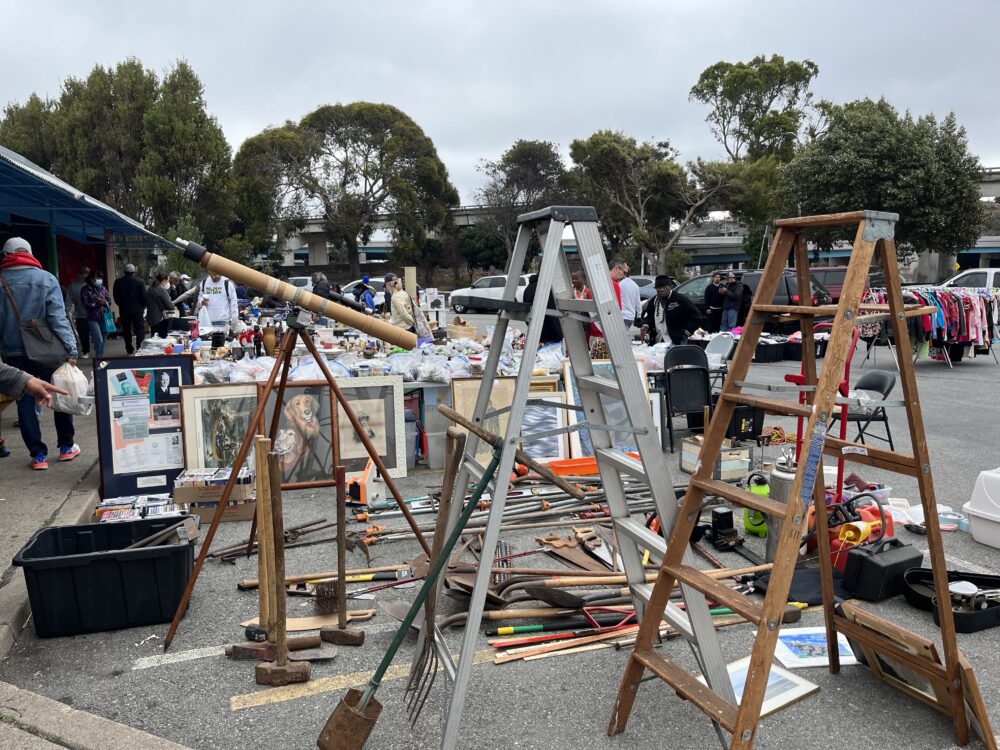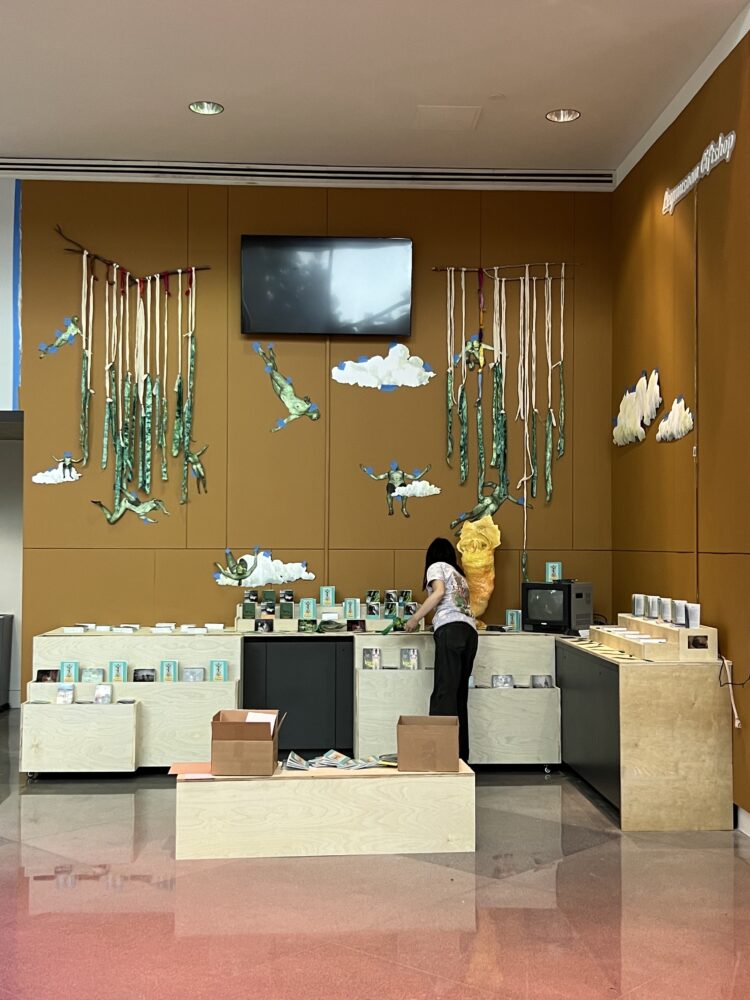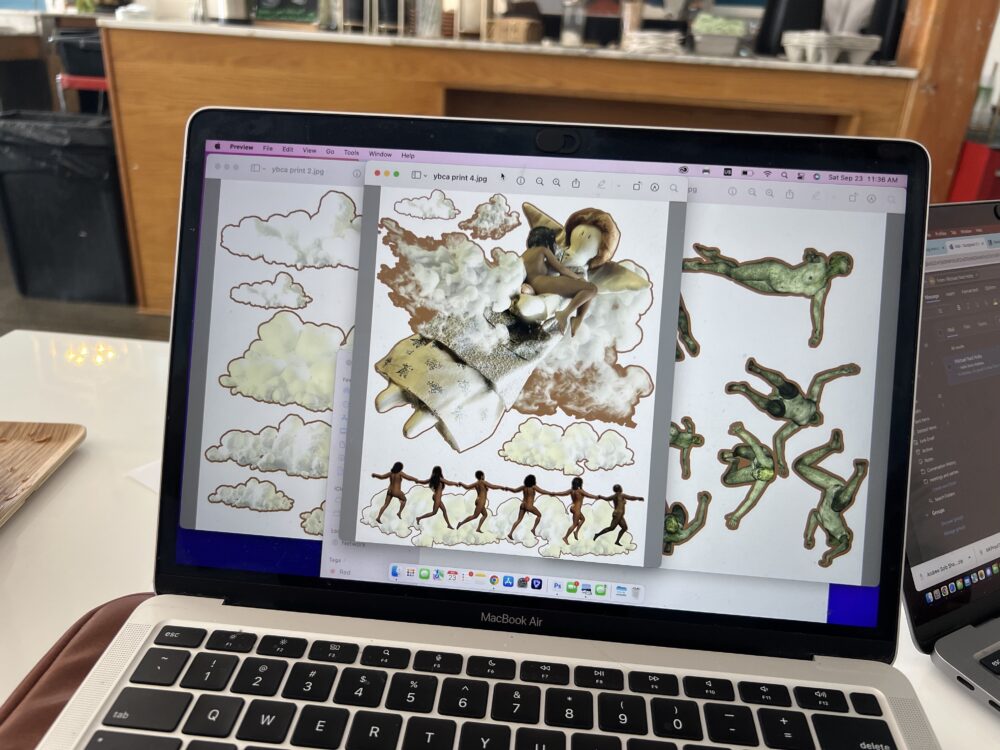Artadia: Can you tell us a bit about your piece(s) included in the exhibition?
Indira Allegra: At YBCA – the nation’s first interactive, public memorial to ‘a loss of a sense of home’ will be part of the Bay Area Now 9 Triennial as a digital memorial tapestry ‘upholstering’ the outside wall of YBCA. When you visit TEXERE, you are invited to choose from a menu of losses that relate to your own story. TEXERE then transforms that entry into a digital thread that is woven into a larger digital tapestry of entries from people all over the world, 24 hours a day who are grieving that same loss. Each time anyone engages in the simple ritual of making a new entry, the composition of the tapestry changes. Through woven patterns, TEXERE is a new kind of memorial experience that provides a visual archive of how we collectively change and grow in relationship to our experiences of loss.
The installation faces Mission Street in downtown San Francisco visible after dark by thousands of people daily. The memorial is timely as it addresses the feelings of emotional and physical displacement which have occurred over the last three years, and the housing crisis gripping the Bay Area with the concurrent state of emergency declared regarding the tens of thousands of homeless, houseless and housing insecure people struggling to survive in the region.
Michael Arcega: The installation, titled Trophy Room makes use of the yard-sale vernacular as the main form. The piece will display a collection of previously owned items that I collected across North America since 2011. Overall, the work reflects a portrait of the Nacirema, a people who have occupied this landscape, naming, marking and laying claims. These objects signify their most prized events, items and sites. The concept and study of the Nacirema stems from the work of Horace Miner, an anthropologist who first wrote about them in 1956 (Nacirema is American in reverse).
Heesoo Kwon: My current practice centers on Leymusoom, a feminist religion of my own invention that challenges embedded, received patriarchal religious and family norms. My work primarily involves crafting feminist and queer rituals integral to Leymusoom practice.
In my installation for Bay Area Now 9, which occupies space in YBCA’s Grand Lobby and upstairs, I utilize advanced digital techniques to resurrect my female ancestors in a liberated digital realm. Employing 3D-modeling, animation, scanning, gaming elements, and various media, I envision a utopian world where my forebears exist free from the constraints of time, space, and patriarchal doctrine.
A seven-month temporary vending installation takes the form of a religious gift shop in collaboration with Sming Sming Books. Leymusoom Giftshop includes a selection of Leymusoom’s holy gifts, including the Leymusoom Bible, prayer booklets, bookmarks, postcards, bandanas, stickers, and Leymusoom amulets. Meant to resemble religious gift shops, the objects in Leymusoom Giftshop are for sale.
A: What themes/concerns does your practice explore at the moment, and how have they shifted since receiving the Artadia Award?
IA: I still explore the same themes as I did when receiving the Artadia Award. The only difference at this stage in my career is I get to focus on artworks which build interdisciplinary worlds rather than solo works or even solo bodies of work.
MA: At the moment, my work is reflecting on American colonization as seen through object-evidence that is scattered across its landscape, hidden in plain sight. My work has shifted focus from Philippine-centered research towards an expanded identity as an immigrant American.
HK: As I received the Award just this past spring, the themes of my practice remain the same. However, through the whole application and jurying process, I was connected to so many people who I had known of but never talked to or shared my practice with. Coincidentally, I was chosen for a two month residency at ICA SF which I had applied to a few months prior right after I won the Award. The Artadia Award brought such great support, not only financially but also emotionally, and as an artist it felt amazing to be recognized.
A: Do you identify as a Bay Area artist? Why or why not?
IA: Artists are claimed by many people in many places and at many points in history. It isn’t for me to say who feels or will feel identified with my work. My hope is that by working with universal themes, my work can be of aesthetic, philosophical, or even spiritual value to many.
MA: Yes, the SF Bay Area is now my home. I also identify as a Naturalized Immigrant American Citizen from the Philippines. The broader identity informs my work as an artist, educator and global citizen.
HK: I moved to the U.S. from Korea in 2017 for my MFA at UC Berkeley. It was such a big transition for me to make art in this community because I majored in business in college. I’m really thankful for the people and artists in the Bay Area who were and are really supportive of my work. In Korea, I was born into patriarchy and misogyny – not only Catholicism. I was always told to “obey my father,” meaning God and my dad. Having some distance from my upbringing for the first time in my life, making art, sharing dialogue and ideas with people in the Bay Area really inspired me. To be honest, I don’t think I could do this kind of work if it was not for the Bay Area.



